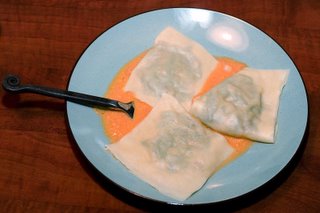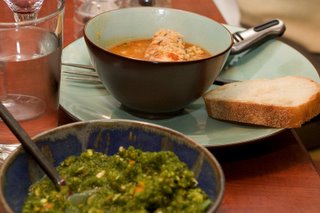I finished Margot Livesey's Banishing Verona last night. The whole way through the book I wanted to like it (and there were parts that were quite good) but something kept me from embracing it. I enjoyed one of Livesey's other novels Eva Moves the Furniture and hoped that this one would prove to be a good read too. (I must confess that I read Eva shortly after Fiona was born and to say that the subject matter--a daughter, a dead mother--and my hormonal state--giddy yet crying at dopey stuff like a lightbulb commercial--combined to make me a highly subjective reader. So I can't say for sure if it was actually a decent book now.)
First the picky little crap of which I may be more unforgiving than most readers (see my rantings about Pope Groan). I'm not sure why inaccuracies or authorial ignorance piss me off so much--it may have to do with my unreasonable worship of certain authors and my hope that each book I read will prove the author worthy of worship, or it may be that I am jarred from a story more easily than many readers when I find factual inaccuracies or improbabilties.
Picky bit #1
Zeke is described as a meticulous painter--someone who channels his obsessive personality into his job--so you believe that he is probably the best gosh darn house painter out there. But then the author ruins it by writing about the painting process with loads of errors.
For example, Zeke spackles at the same time as he paints (gotta wait a day for the spackle to dry), he paints unwashed walls (a no no as far as paint adhesion goes--need that TSP to roughen up the old paint and to get any greasy hand prints off), and he doesn't cut in, just starts painting smack dab in the middle of a wall (you do the edges first, particularly the edges where the walls and ceiling meet or where there is trim). Anyone who has painted a room knows that the incredibly boring prep work--wash, spackle, sand, tape--takes way more time than the actual painting.
Maybe if you choose to make one of your main characters a house painter you should take the time to, say, paint a room in your own house so you know what you are talking about.
Picky bit #2
At one point she says that a minor character has a blue dot on his throat which was the leftover tattoo from his chemotherapy for Hodgkins. However, the tiny blue dot is the tattoo used during radiation treatment, not during chemo, so that the radiologist aims each time at precisely the right spot. If you just had chemo, no dot. If they used radiation on the lymphoma, then you have a dot. This is the kind of thing I expect outside readers (one of whom was Andrea Barrett who I love!) and editors to catch.
Picky bit #3
A moment of complete improbability: When Verona faints in a hotel in Boston, she has an American hotel clerk order "tea and toast" for Verona. That's a totally British thing to do (which reminds me, I must write sometime about the British penchant for toast which goes way beyond the realm of reasonable for such a humble food). It would be ok if Verona (who is English) had asked for tea and toast to comfort herself. But having an American hotel clerk order it is so unlikely as to make me snort.
The Big Complaint and the Author's Predicament
A normal reader might be able to forgive all of the above gripes if the rest of the book was fine, but unfortunately I had a problem in that I didn't believe in one of the main characters--Zeke. The author refers to his "condition" and his "breakdowns" and clearly implies Aspergers Syndrome (a very high functioning form of Autism). But she adopts some of the easier aspects of the syndrome (obsessions with numbers, inability to recognize faces, lack of awareness of social behaviors) but leaves out anything thing that would really make Zeke unappealing. He comes across as quirky and charmingly honest rather than someone who is really struggling with something substantial.
I suspect that the author fell for one of her own characters and that Zeke is shown through the rosy haze of an authorial crush. Unfortunately, this has the effect of flattening his character--I do think that a character's flaws often are what make them interesting.
So what do you think an author should do when they find themselves in this predicament? How do you make a character appealing and still flawed?
A place for friends and fellow obsessors to gather
Tuesday, November 22, 2005
Sunday, November 20, 2005
A birthday dinner
You probably figured out what the photo of the phlegm colored gunk in the bowl in the last post was: that was my contribution to the pistachio gelato tasting. (We all now know why most frozen pistachio confections add a little bit of green dye...) I made the Southern Italian version (all milk, no eggs), Sarah made the Central Italian version (no cream but 7 egg yolks) and John made the Northern Italian version (9 egg yolks plus a bit of cream).
The gelato tasting was the conclusion to a birthday dinner for John which, other than my kids having total melt-downs near the end, was a lovely evening. For the tasting, we sent Sarah's Brian (Brian P.) into the kitchen to prepare the tasting bowls and only he knew the identity of the different scoops (one scoop was marked with a cookie, one with a little stick of un-cooked spaghetti, and the other was plain--very clever, that Brian).
 And then we all dug in and tried to determine which scoop was which recipe. Sarah got all three right and I got all three wrong....As Brian P. remarked, what business do I have writing about food when I can't even determine the presence or absence of a sizeable quantity of egg yolk!?
And then we all dug in and tried to determine which scoop was which recipe. Sarah got all three right and I got all three wrong....As Brian P. remarked, what business do I have writing about food when I can't even determine the presence or absence of a sizeable quantity of egg yolk!?
Seriously, they all were good, but I'm amazed that I mistook my recipe (the lowest in fat--just whole milk in there) with John's high fat recipe. I really thought it tasted the creamiest!
We all decided that we need to do this again, next time with three chocolate gelato recipes (we'll have to standardize the brand of chocolate and cocoa used) since the texture of the pistachio gelatos was a bit bumpy with all those ground up nuts in there. Maybe the mouth-feel of something that is supposed to be smooth will prove to be more revealing of the recipe source. And I think I can locate the three recipe variations.
The rest of the meal was delicious, too. I made the starter, Swiss chard and prosciutto stuffed ravioli with a tomato cream sauce. (The chard and tomatoes were the final produce from my garden--bye bye garden, till next year.)
 The recipe was from a recent issue of Gourmet and unfortunately it hasn't been added to the Epicurious recipe site yet. I followed the recipe with one exception--I felt compelled to grate a little lemon zest into the ravioli filling (there was also sauteed onion, ricotta, Parmesan, egg yolk and nutmeg) and I'm glad I added that little tweak because I thought it saved the dish from excessive richness and gave it a little lift. This time I followed the step by step instructions for making the pasta and it turned out much more elastic and springy than my previous (neglectful) attempts. Key to getting the spring in the dough was a much slower incorporation of the flour into the eggs. I've been pretty slap-dash in the past and thus the dough wasn't kneaded as well as it should have been.
The recipe was from a recent issue of Gourmet and unfortunately it hasn't been added to the Epicurious recipe site yet. I followed the recipe with one exception--I felt compelled to grate a little lemon zest into the ravioli filling (there was also sauteed onion, ricotta, Parmesan, egg yolk and nutmeg) and I'm glad I added that little tweak because I thought it saved the dish from excessive richness and gave it a little lift. This time I followed the step by step instructions for making the pasta and it turned out much more elastic and springy than my previous (neglectful) attempts. Key to getting the spring in the dough was a much slower incorporation of the flour into the eggs. I've been pretty slap-dash in the past and thus the dough wasn't kneaded as well as it should have been.
Sarah made a terrific Portuguese chicken soup for the main course.
 It was served with the fabulous sofrito pictured in the foreground above--annatto seeds, peppers, garlic, etc. Combined with the rich chicken and rice soup, it made for a perfect cold weather meal. Sarah promised to send me the recipe so I will post it soon.
It was served with the fabulous sofrito pictured in the foreground above--annatto seeds, peppers, garlic, etc. Combined with the rich chicken and rice soup, it made for a perfect cold weather meal. Sarah promised to send me the recipe so I will post it soon.
The gelato tasting was the conclusion to a birthday dinner for John which, other than my kids having total melt-downs near the end, was a lovely evening. For the tasting, we sent Sarah's Brian (Brian P.) into the kitchen to prepare the tasting bowls and only he knew the identity of the different scoops (one scoop was marked with a cookie, one with a little stick of un-cooked spaghetti, and the other was plain--very clever, that Brian).
 And then we all dug in and tried to determine which scoop was which recipe. Sarah got all three right and I got all three wrong....As Brian P. remarked, what business do I have writing about food when I can't even determine the presence or absence of a sizeable quantity of egg yolk!?
And then we all dug in and tried to determine which scoop was which recipe. Sarah got all three right and I got all three wrong....As Brian P. remarked, what business do I have writing about food when I can't even determine the presence or absence of a sizeable quantity of egg yolk!?Seriously, they all were good, but I'm amazed that I mistook my recipe (the lowest in fat--just whole milk in there) with John's high fat recipe. I really thought it tasted the creamiest!
We all decided that we need to do this again, next time with three chocolate gelato recipes (we'll have to standardize the brand of chocolate and cocoa used) since the texture of the pistachio gelatos was a bit bumpy with all those ground up nuts in there. Maybe the mouth-feel of something that is supposed to be smooth will prove to be more revealing of the recipe source. And I think I can locate the three recipe variations.
The rest of the meal was delicious, too. I made the starter, Swiss chard and prosciutto stuffed ravioli with a tomato cream sauce. (The chard and tomatoes were the final produce from my garden--bye bye garden, till next year.)
 The recipe was from a recent issue of Gourmet and unfortunately it hasn't been added to the Epicurious recipe site yet. I followed the recipe with one exception--I felt compelled to grate a little lemon zest into the ravioli filling (there was also sauteed onion, ricotta, Parmesan, egg yolk and nutmeg) and I'm glad I added that little tweak because I thought it saved the dish from excessive richness and gave it a little lift. This time I followed the step by step instructions for making the pasta and it turned out much more elastic and springy than my previous (neglectful) attempts. Key to getting the spring in the dough was a much slower incorporation of the flour into the eggs. I've been pretty slap-dash in the past and thus the dough wasn't kneaded as well as it should have been.
The recipe was from a recent issue of Gourmet and unfortunately it hasn't been added to the Epicurious recipe site yet. I followed the recipe with one exception--I felt compelled to grate a little lemon zest into the ravioli filling (there was also sauteed onion, ricotta, Parmesan, egg yolk and nutmeg) and I'm glad I added that little tweak because I thought it saved the dish from excessive richness and gave it a little lift. This time I followed the step by step instructions for making the pasta and it turned out much more elastic and springy than my previous (neglectful) attempts. Key to getting the spring in the dough was a much slower incorporation of the flour into the eggs. I've been pretty slap-dash in the past and thus the dough wasn't kneaded as well as it should have been.Sarah made a terrific Portuguese chicken soup for the main course.
 It was served with the fabulous sofrito pictured in the foreground above--annatto seeds, peppers, garlic, etc. Combined with the rich chicken and rice soup, it made for a perfect cold weather meal. Sarah promised to send me the recipe so I will post it soon.
It was served with the fabulous sofrito pictured in the foreground above--annatto seeds, peppers, garlic, etc. Combined with the rich chicken and rice soup, it made for a perfect cold weather meal. Sarah promised to send me the recipe so I will post it soon.
Subscribe to:
Posts (Atom)